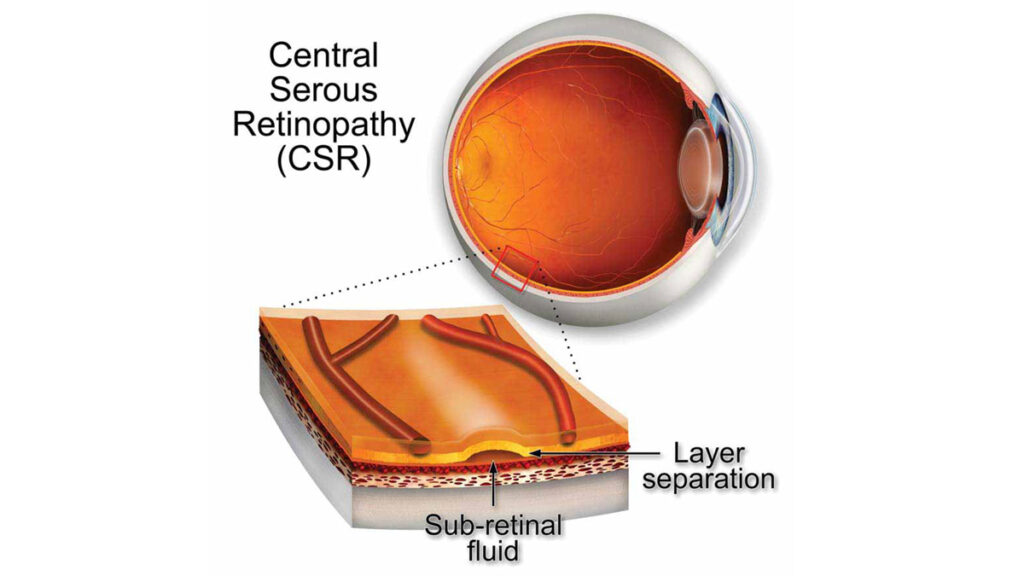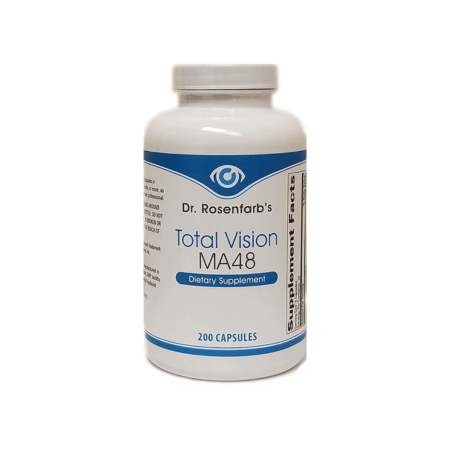Central Serous Choroidopathy
Overview & Our Approach to Central Serous Choroidopathy
Our approach to managing CSC goes beyond conventional treatment methods, aiming to address both the symptoms and underlying causes:
- Reducing Choroidal Vascular Compromise: We utilize acupuncture, supplements, and advanced therapeutic devices to support vascular health in the choroid layer, helping to reduce fluid leakage and improve retinal stability.
- Preserving Macular Function: Our treatments focus on managing the underlying factors contributing to macular detachment, including oxidative stress, inflammation, and vascular health, to preserve and enhance central vision
- Telehealth & In-Office Treatments: Intensive, personalized treatments in our New Jersey office for the fastest and most effective results.
- At-Home Care with ACS3000: Our ACS3000 system supports retinal health with convenient at-home treatments, complementing in-office care.
- Targeted Supplements: We provide specialized and targeted supplements designed to support eye health, combat vascular compromise, and maintain retinal integrity.
Symptoms & Causes of Central Serous Choroidopathy

Symptoms of Central Serous Choroidopathy:
Blurry Vision: A sudden onset of blurry vision in one eye is one of the most common symptoms, often accompanied by difficulty focusing.
Dimmed Colors: Patients may notice that colors appear less vibrant or dimmer, particularly in the affected eye.
Micropsia: Objects may appear smaller than they are, a condition known as micropsia, due to the distortion of the retina.
Central Scotoma: A blind spot may develop in the central vision, making it difficult to see fine details or read.
Distorted Vision: Straight lines may appear wavy or distorted, further affecting visual clarity.
Causes of Central Serous Choroidopathy:
Choroidal Vascular Compromise: CSC is believed to stem from poor choroidal vascular health, where hyperpermeability and focal vascular compromise lead to fluid leakage beneath the retina.
Breaks in the Retinal Pigment Epithelium (RPE): Small breaks or dysfunctions in the RPE layer allow fluid from the choroid to accumulate under the retina, causing macular detachment.
Oxidative Stress and Inflammation: Chronic oxidative stress and inflammation may contribute to vascular dysfunction, further exacerbating fluid leakage and retinal detachment.
Stress and Hormonal Factors: Psychological stress and elevated cortisol levels have been linked to the onset and recurrence of CSC, as they may influence choroidal blood flow and permeability.
Genetic and Environmental Factors: A genetic predisposition to CSC, combined with environmental triggers such as stress, smoking, and certain medications, can increase the risk of developing the condition.

Telehealth and Intensive In-Office Central Serous Choroidopathy Treatment
Start Your Journey with a Telehealth Consultation and Experience the Fastest Results with Our Comprehensive In-Office Care
If you’re seeking the most effective treatment for Central Serous Choroidopathy, our intensive in-office appointments offer the fastest results. Many of our patients choose to visit our New Jersey office for this reason. During these intensive appointments, you’ll undergo a series of advanced treatments tailored to your specific needs over several days, ensuring comprehensive and effective care.

At-Home Central Serous Choroidopathy Treatment with the ACS-3000
Discover the At-Home Frequency Specific Alternating Current Micro Stimulation System
Yes, you can achieve vision recovery from the comfort of your home! Introducing the all-new ACS-3000 at-home vision recovery system. This advanced technology utilizes Frequency Specific Alternating Current Micro Stimulation to preserve macular function and improve vision.
The ACS-3000 system is designed for convenience and effectiveness, allowing you to benefit from cutting-edge treatments without leaving your home. It’s an excellent option for those seeking ongoing care and maintenance for Central Serous Choroidopathy.
Shop Central Serous Choroidopathy Supplements

Total Vision MA48
Comprehensive nutritional formula providing the nutrients specifically related to target and support of general eye health and vision.

LipoVision DHA

MSM Drops
MSM is a special biological sulfur needed by the body to maintain youthful, healthy connective tissue, protein and pH levels.


